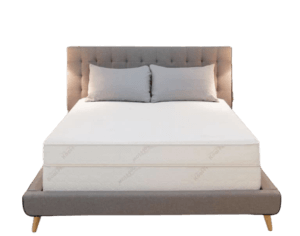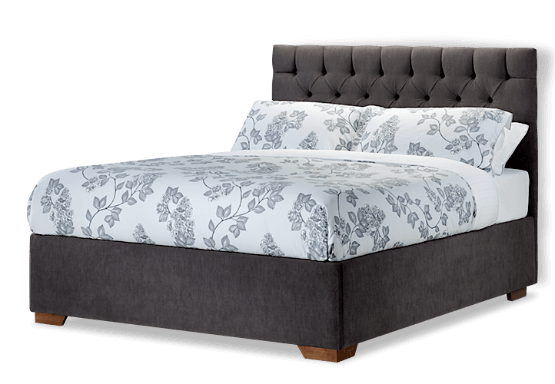For those looking into using an air mattress for their everyday mattress, you’ve likely come across a few different types to choose from. Just like there are a number of different foam mattresses, there’s also a few different types of air cell mattresses to choose from.
Although these beds are generally reserved for those who need pressure redistribution for their joints, wound care or general pressure relief after an injury, they still offer some pretty great comfort – so long as you choose the right one.
If you’re having a little trouble convincing your partner to switch to a new mattress system, like an air mattress, or just want to know a little more about air mattress types, we have some great tidbits for you below. Hopefully all the information helps you with your next mattress replacement, take a look.
The Design and System of Low Air Loss and Alternating Pressure Mattresses
As expected, there are two different technologies or systems at play here, though both come together to offer a similar result.
The Similarities
Both low air loss and alternating pressure mattresses will need to have a consistent air flow to ensure they work effectively. This is because all mattresses will, and do, lose air over time and if this happens, the structure of the mattress changes – leading to issues like sore backs.
As a result of this required air flow, companies who design and distribute these types of mattresses build air pumps into the products themselves, or create pumps that can easily sit by the bed and regulate interface pressure on the body.
Both mattress types also feature pumps or blowers that are adaptable and adjust either automatically or manually to keep pressures ideal inside the mattress. These auto-adaptions are what control an air mattress’s deflation and inflation when someone’s sleeping on them, to make the bed softer and more comfortable to fall asleep on.
In hospital beds, or in-home care beds, an air mattress will be exceptionally helpful when it comes time for someone get up out of bed, or sit up, as the blower can be quickly adjusted to support surface tension increases. This makes it a lot more effortless for people to sit up in bed.
The Alternating Pressure Mattress System
To keep things as simple as possible, you can think of an alternating pressure mattress as a system that works with a lot of air cells or air ‘bladders.’
Inside these mattresses you’ll find that the blower routinely adjusts and changes the pressure in each air cell independently to keep users of the bed from getting pressure sores. Along with this, the changes in air pressure keep the body of the mattress moving, and as a result keep the sleeper moving too, which assists in improving blood flow.
In almost all cases, an alternating pressure mattress system will have a full-auto blower that takes care of all of these changes or you. There’s no need for you to stand in, and you won’t often have to do anything unless you really want to. For those who are working as a caregiver, and who explicitly need to adjust settings to reduce pressure point pain or reduce skin breakdown, you’re still able to do this.
- These types of air mattresses are generally reserved for healthcare use cases as opposed to general everyday sleeping. However, bariatric patients who require in-home care will benefit from such mattresses.
The Low Air Loss Mattress System
On to the more commonly used mattress in the home, the low air loss system is an ideal solution for those who’d like to switch from a standard mattress to something a little more adaptable.
All mattresses that are true low air loss variants are designed and cut with lasers, and feature thousands of small holes in the top of the mattress to allow small streams of air to escape – to improve comfort. As you move about these mattress types, you don’t want to feel as though you’re on a balloon, so the controlled deflation and inflation helps here.
Where this design comes in most handy is in weightlessness sensations. If you’re someone who suffers severe back pain, hip pain or shoulder pain when sleeping, a low air loss mattress’s caress will be your best bet at alleviating this pain.
To add, these mattresses are exceedingly well-ventilated by design, so you’re not going to suffer from pressure injuries from moist skin on a mattress like this.
Lastly, as there’s constant airflow leaving the mattress, there’s a cooling sensation that makes sleeping a whole lot more pleasant if you’re sensitive to hotter temperatures.
Summary
- An alternating pressure mattress is primarily used in hospitals and caregiving situations where immobility, bedsores and pressure ulcers are a common occurrence and if repositioning tasks are difficult.
- A low air loss system is more commonly used in the home as an everyday bed for those who’d like to explore the system, or want to test a solution for severe pain when sleeping. These also come in handy in rehabilitation after surgery for example.
Choosing an Air Mattress
Although there are a tonne of air mattresses on the market, it’s important to note that there are different use cases for these. If you’re looking for an everyday mattress, then a cheaper standard option is a great idea, especially if you’re using it as a day bed or for camping.
However, when it comes to rehabilitation and pain-relief requirements, there’s a little more that needs to go into choosing an air mattress.
PressureGuard Custom Care® Convertible – For Care
Our top choice for in-home care and pain relief is the PressureGuard air mattress. This mattress offers fantastic support and has been designed in a way that reduces bed falls and adapts to assist with lateral rotation.
There are a number of air pressure controls here, and with a good array of air bladders, there’s a lot of customisability when it comes to selecting the firmness of inflated zones.
There’s also a fluid proof covering on this mattress and anti-bacterial qualities which make sure there’s little to no chance of added infection if a wound is cared for correctly prior to setting down on the mattress.
Perks
Ensures Minimal Sheering
Reduces Risk of Bed Falls
Simple Control Unit
Insta-Bed Raised Air Mattress with Never Flat Pump – For Home or Leisure
Our top choice air mattress for home and leisure, or even camping, is the Insta-Bed which has been designed for both indoor and outdoor use and comes in a range of colours.
The mattress works in a similar way that a low air loss system would, in that the pump remains adaptive and controls the movement of air throughout the air cells during use. This makes for a comfortable experience on the mattress and keeps the bed inflated at all times.
Short inflation times also mean the Insta-Bed is generally ready to be inflated in moments, with inflation generally taking less than five minutes.
At 18 inches tall the air mattress is rather high, though if standing alone and not on a frame, it’s the ideal height for everyday use, without being too low or high and running the risk of causing injury.
Perks
Fast Inflation Time
Automatic Blower Control
35 Air Cell Coils
Dual-pumps for Optimal Inflation
Conclusion
As is clear from our outline above, there are two different types of air mattresses that are designed for very different reasons. The low air loss mattress and alternating pressure mattresses are developed primarily to assist in the at-home care and recovery of injuries, or to make the pains associated with ageing more bearable when it comes time to go to sleep.
It’s good to note, however, that air mattresses are a good product for improving nighttime comfort and offer great support for joints and the spine. If you’re looking to change up your sleeping habits and say goodbye to a coil spring mattress or a memory foam variant, then an air mattress is certainly a good choice.


